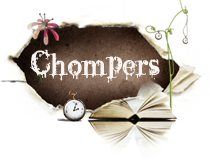First, I want to thank Donna for both reviewing Draw the Dark and asking for this guest post. Donna, you rock.
Second, thanks go to you—the readers out there—for taking a couple minutes out of your lives to spend here. I’ll try to be short and sweet about how I came to write this book, where Christian really comes from, that kind of stuff, bearing in mind that none of you have read the book yet. Remember, though: Most of what I do is a mystery to me, and there’s an advantage to keeping it that way.
So, short and sweet, this book happened because:
a) I’m Jewish and the daughter of a Holocaust survivor;
b) I live in rural Wisconsin about a stone’s throw away from an old Hebrew cemetery—which is weird because we’re the only Jewish family in town;
c) A German PW camp once stood about four miles from my house, and was only one of thirty-eight such camps in the state;
d) I think all art tells a story;
e) I’m a child shrink.
Like I said: relatively short and sweet. If that’s good enough for you, feel free to click away and thanks for dropping by. But, for those of you interested in the longer version, let’s take them in order.
A: Straightforward enough. My dad was in several camps, so the Holocaust has always been background music.
B: A disclaimer first: I love where I live. Wouldn’t dream of moving back East. Just so we’re clear on that.
But—we’re the only Jews in town. I’m not kidding. There are about fifty Jewish folks who form the nucleus of the one remaining synagogue the next town over, but the median age is about sixty-five. So we’re talking terminal dwindles here. To put this in perspective, there used to be about a thousand Jews and several synagogues as late as the 1950s: so many Jews, they called this area, “Little Jerusalem.”
More to the point, virtually no one in my village has ever met a Jew. I remember the first time this older guy found out I was Jewish. First thing out of his mouth: Hey, I heard Jewish people get buried standing up. I’m not making this up.
But . . . wait a minute. There’s that Hebrew Cemetery just spitting distance from my house. So what’s with that?
So I got curious and started digging and unearthed some interesting stuff, which leads us to . . .
C: History. I stumbled on a fabulous book, Betty Cowley’s Stalag Wisconsin, and here’s what I found out.
Prior to 1942, England held several thousand German prisoners of war
 . The Brits were really nervous that Hitler was going to destroy England from the inside-out by air-dropping weapons to all those prisoners. (I know. Sounds silly now but the Nazis had already bombed the crap out of London in the Blitz.) So England asked the U.S. to take the PWs off their hands.
. The Brits were really nervous that Hitler was going to destroy England from the inside-out by air-dropping weapons to all those prisoners. (I know. Sounds silly now but the Nazis had already bombed the crap out of London in the Blitz.) So England asked the U.S. to take the PWs off their hands.We did. The first PWs started arriving in 1942. Wisconsin’s Camp McCoy was one of the first Army base camps, the place where captured Germans (and Italians and Japanese) would be processed before being moved along to other smaller, rural branch camps. The PWs were moved all over the U.S. and wherever they were needed to ease manpower shortages on farms and in factories. At its peak, the number of German PWs, held in the U.S., was about a half-million men.
In many towns, especially in the heavily Germanic Midwest, camp officials were deluged with requests from U.S. citizens about German relatives. Cowley’s book is chock-full of stories about things like German PWs knocking on relatives’ door, or of a German-American discovering a cousin or uncle or brother in a nearby PW camp. After the war, many German PWs came back to the U.S.—to these communities—to live.
All that history got me thinking: what would it be like to be Jewish and to live here at that particular time? There are these Germans PWs, who’ve worked for a government that pretty much wants to wipe you out, and now they’re just down the road. They’re working in factories, in the fields. Many times, there are people in town—your neighbors—who aren’t unhappy; who are, in fact, thrilled because some of those men are relatives or friends.
Think about it.
D&E: These are related, and here’s how. I think all art tells a story. I’m talking pictures now, but you can make the same argument about any art. Sometimes, the story’s about the artist’s reason for painting: where he lives, what’s going on politically, that kind of thing. Sometimes it’s about the relationship to what he’s painting. And—almost always, I think—the story’s about the painter’s relationship to the actual paint, the canvas, the brush, that palette knife. So when I look at a painting, I try to understand not only what an artist is trying to tell me but what the artist felt when he or she created the work.
That’s where Christian Cage enters: at the intersection of history and imagination and into a story I wanted to tell of the darkness of a town and its secrets, and of a personal darkness that takes courage to explore. (His name says it all, don’t you think?) Christian tells his personal story to himself by painting; he paints his history and his questions all over his walls. His room is the inside of his head. His problem is that he can’t make sense of it all; it never quite comes together. Sometimes, his darkness freaks him out.
Now, as a child shrink, I’ve always been interested in and drawn to the sideways place in people’s minds: the buried place where darkness lives. In fact, when I stop to re-read the first section of Draw again—which, one day, I hope you do as well—I realize that I’ve written a pretty fair description of what my job was as a child psychiatrist: to draw the dark. To try to help kids put words to what troubles or angers or haunts or frightens them. Which means—they have to go there: to that sideways place. Personally, I think that takes guts. But no matter how frightening, I think the journey through the darkness is worth it. Call the reward insight; call it understanding.
Or call it hope. I do.
So, there you go, some of the how and the why of Draw the Dark. As for the rest: If you’re inclined to read the book, you’ll take it from here.
Thanks for dropping by.
Ilsa J. Bick











3 comments:
Wow, I had no idea that there were German POW camps in the US. I know that's silly, but WOW. Guess you learn something new every day.
I learned about German POW camps when I visited a museum in New York that had a small section dedicated the the POWs held there. I was fascinated. I've heard of other camps since then. It's interesting the way that history is framed in books. For instance, many of my students are suprised to learn about the existence of Japanese Internment Camps. I am teaching a course on the Holocaust to seniors next year and think that I should read this book. Maybe it will fit somehow? The students are very excited about this course--They designed it. Thanks for the interview and for writing for teens!
I didn't know about the POW camps either until I read this book, although I did know about the Japanese internment camps here. This is why I love reading!
Post a Comment